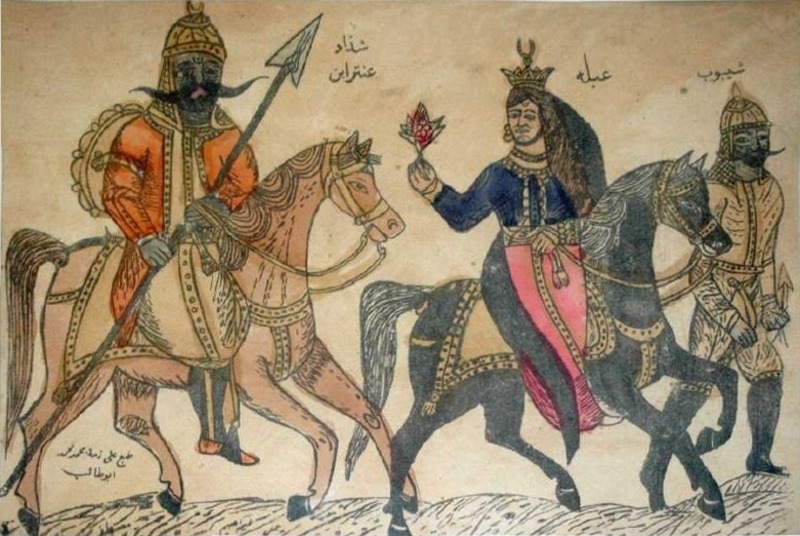ملف:Antarah ibn Shaddad & Abla.jpg
Antarah_ibn_Shaddad_&_Abla.jpg (800 × 536 بكسل حجم الملف: 137 كيلوبايت، نوع MIME: image/jpeg)
تاريخ الملف
اضغط على زمن/تاريخ لرؤية الملف كما بدا في هذا الزمن.
| زمن/تاريخ | صورة مصغرة | الأبعاد | مستخدم | تعليق | |
|---|---|---|---|---|---|
| حالي | 18:58، 22 يناير 2014 |  | 800 × 536 (137 كيلوبايت) | Carnby | Better crop |
| 04:01، 29 مارس 2009 |  | 777 × 517 (115 كيلوبايت) | BomBom | cropped image borders | |
| 22:48، 15 فبراير 2009 |  | 800 × 536 (129 كيلوبايت) | BomBom | {{Information |Description=A 19th-century tattoing pattern depicting pre-Islamic Arab hero and poet Antarah ibn Shaddad (left) and his lover Abla (middle) riding horses. The character on the right is called Shayyoub. The inscript |
استخدام الملف
ال35 صفحة التالية تستخدم هذا الملف:
- أدب الملحمة العربية
- أدب عربي
- ألف ليلة وليلة
- الفروسية في التاريخ الإسلامي
- الفن الفاطمي
- ثقافة العراق
- ثقافة عربية
- جاز شرقي
- جوامع اللذة (موسوعة تراثية)
- حمارة القايلة
- حماسة (شعر)
- خط الرقعة
- رموز الشرف عند البدو
- سجاد عربي
- شعر عربي
- شيبوب بن شداد
- طرب أندلسي
- عبلة بنت مالك
- عصور الأدب العربي
- عنترة (مسرحية)
- عنترة بن شداد
- غزل (شعر)
- فن نبطي
- مراسم الزواج عند العرب
- مطبخ عربي
- مقام (مزار)
- موسيقى عربية
- نثر مقفى
- مستخدم:EgyAbodggg5g70868
- مستخدم:عمر/معلب 4
- مستخدم:عمر/ملعب 3
- مستخدم:محمد رشاد ابوالنجا/ملعب12
- ويكيبيديا:العلمانية والمساواة
- قالب:تصفح مقالات مشروع العلمانية والمساواة
- قالب:ثقافة عربية
الاستخدام العالمي للملف
الويكيات الأخرى التالية تستخدم هذا الملف:
- الاستخدام في arz.wikipedia.org
- الاستخدام في az.wikipedia.org
- الاستخدام في bn.wikipedia.org
- الاستخدام في bs.wikipedia.org
- الاستخدام في ca.wikipedia.org
- الاستخدام في da.wikipedia.org
- الاستخدام في de.wikipedia.org
- الاستخدام في en.wikipedia.org
- الاستخدام في es.wikipedia.org
- الاستخدام في fa.wikipedia.org
- الاستخدام في fr.wikipedia.org
- الاستخدام في ha.wikipedia.org
- الاستخدام في he.wikipedia.org
- الاستخدام في hu.wikipedia.org
- الاستخدام في it.wikipedia.org
- الاستخدام في kk.wikipedia.org
- الاستخدام في mk.wikipedia.org
- الاستخدام في mwl.wikipedia.org
- الاستخدام في pl.wikipedia.org
- الاستخدام في pt.wikipedia.org
- الاستخدام في ru.wikipedia.org
- الاستخدام في sr.wikipedia.org
- الاستخدام في tr.wikipedia.org
- الاستخدام في uz.wikipedia.org
- الاستخدام في vi.wikipedia.org



